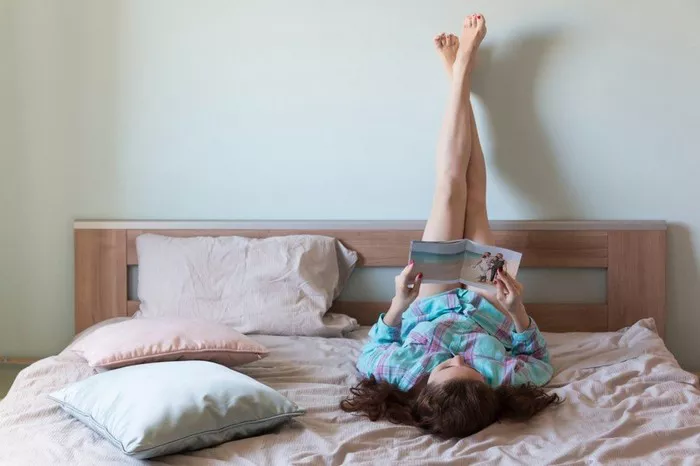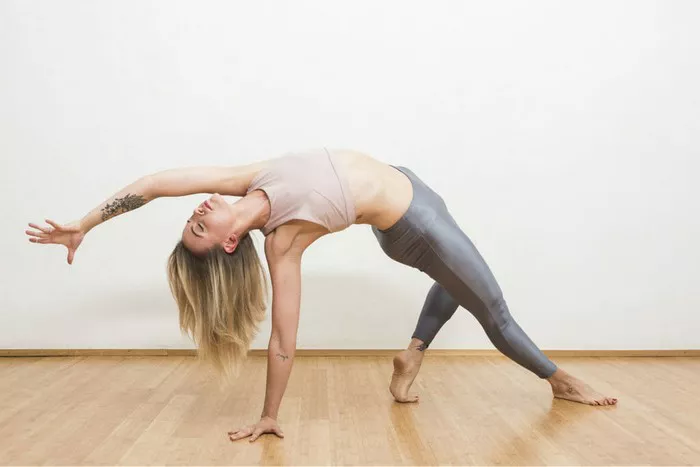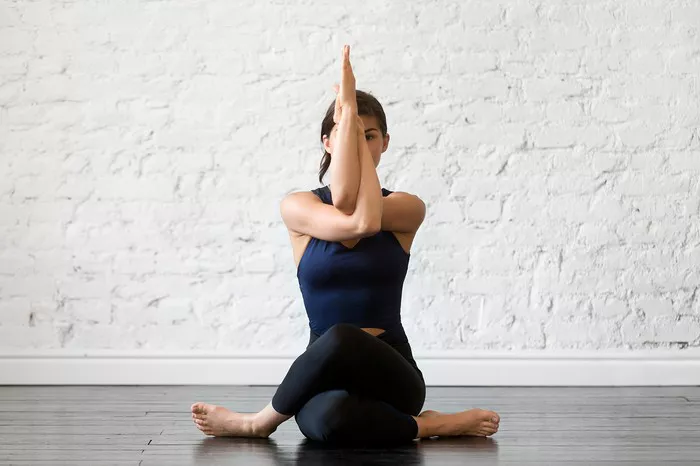Restorative yoga offers a deeply relaxing experience that allows individuals to unwind, rejuvenate, and find balance. When practiced in pairs, it not only enhances the benefits of individual practice but also fosters a deeper connection between partners. Couples restorative yoga focuses on gentle poses supported by props, encouraging relaxation and opening up the body. In this article, we’ll delve into a variety of couples restorative yoga poses, highlighting their techniques, benefits, and variations.
1. Supported Child’s Pose (Balasana)
Supported Child’s Pose is a calming posture that gently stretches the hips, thighs, and lower back. To practice this pose in pairs, one partner assumes the traditional Child’s Pose position while the other partner sits behind, gently supporting the forward-bending partner’s hips and lower back with their hands. This provides a comforting sensation and allows for a deeper release in the hips and spine.
2. Partner Seated Forward Fold (Paschimottanasana)
Partner Seated Forward Fold offers a gentle stretch to the back of the body while promoting relaxation and communication between partners. Sit facing your partner with your legs extended straight in front of you. Hold hands and gently fold forward, keeping your backs aligned. Use your partner’s support to deepen the stretch, focusing on maintaining a relaxed breath throughout the pose.
3. Reclining Bound Angle Pose (Supta Baddha Konasana) with Partner
Reclining Bound Angle Pose is a deeply restorative posture that opens the hips and chest while promoting relaxation. When practiced with a partner, it enhances the experience by providing gentle support and encouragement. Lie down facing each other, bringing the soles of your feet together and allowing your knees to fall open to the sides. Hold hands or place them on each other’s chests to deepen the connection and sense of relaxation.
4. Partner Supine Twist (Supta Matsyendrasana)
Partner Supine Twist offers a gentle twist to the spine, releasing tension in the back and promoting relaxation. Lie down facing your partner with your knees bent and feet flat on the floor. Extend your arms out to the sides in a T-shape, palms facing down. Inhale to lengthen the spine, then exhale as you gently guide your knees to one side while your partner mirrors the movement. Hold the twist for a few breaths before switching sides.
5. Partner Supported Heart Opener
Partner Supported Heart Opener is a nurturing pose that encourages openness and vulnerability between partners. Sit facing each other with your legs crossed and knees touching. Extend your arms behind you, placing your hands on the floor for support. Lean back into each other’s arms, allowing your chests to open and your hearts to lift. Focus on breathing deeply into the chest and allowing any tension to melt away.
6. Partner Seated Meditation
Partner Seated Meditation is a simple yet powerful practice that cultivates presence and connection between partners. Sit cross-legged facing each other, maintaining a comfortable distance apart. Close your eyes and bring your attention to your breath, syncing your inhalations and exhalations with your partner’s. As you breathe together, allow any distractions to fade away, and simply be present with each other in silence.
7. Partner Supported Savasana
Savasana, or Corpse Pose, is the final relaxation pose in a yoga practice, allowing the body to integrate the benefits of the practice. When practiced with a partner, it can deepen relaxation and foster a sense of trust and surrender. Lie down on your backs with a comfortable distance between you. Close your eyes and allow your bodies to fully relax into the support of the earth beneath you. If desired, hold hands or place a hand on each other’s hearts to further enhance the connection.
Conclusion
Couples restorative yoga offers a unique opportunity for partners to deepen their connection, cultivate intimacy, and support each other’s well-being. By practicing gentle, supportive poses together, couples can experience profound relaxation, increased communication, and a greater sense of unity. Incorporating these poses into your yoga routine can enrich your relationship and create lasting bonds of love and connection.






















